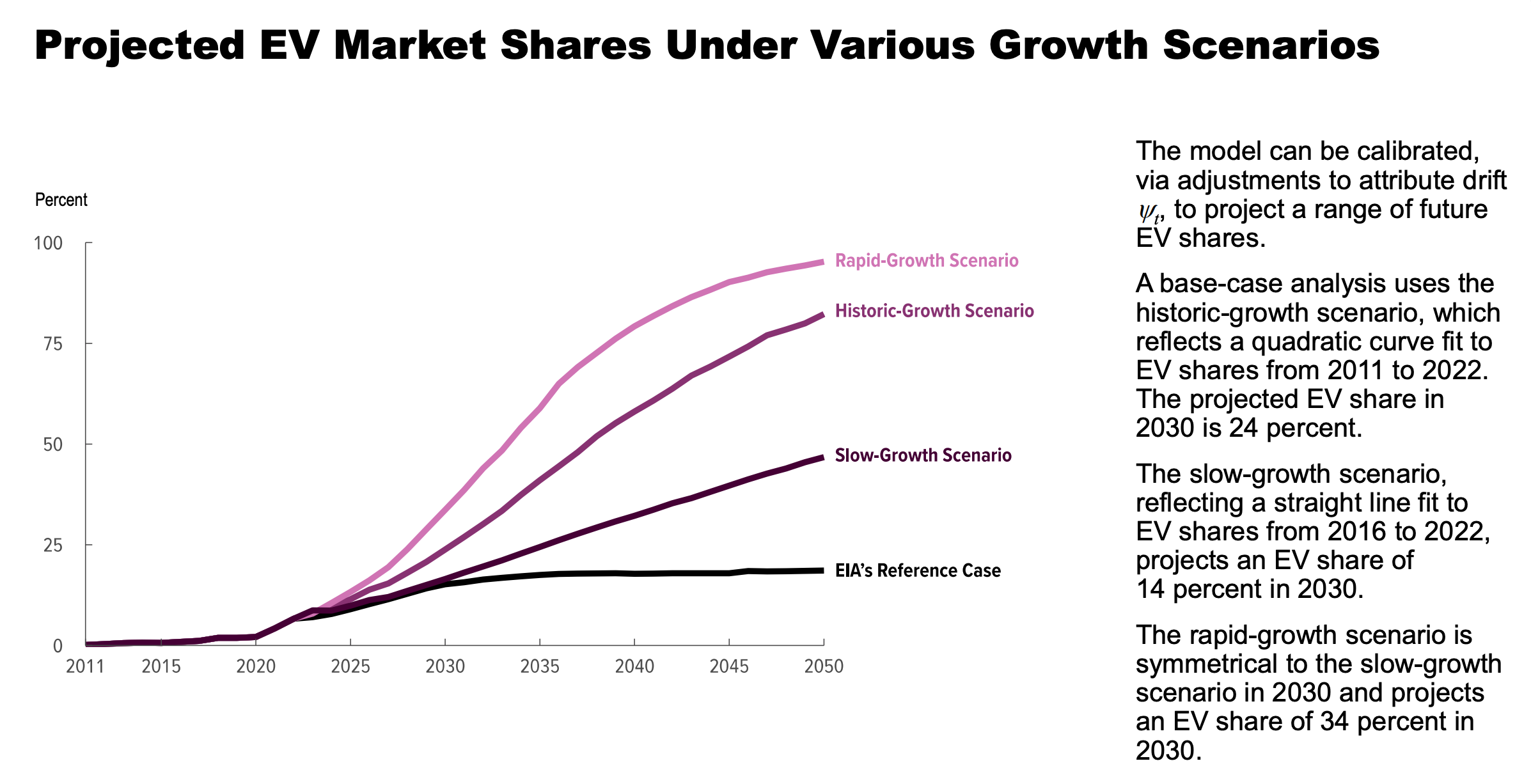The nonpartisan Congressional Budget Office has released a series of rough projections of how quickly electric vehicles, and electric charging stations, will replace internal combustion vehicles and fossil fueling stations in the U.S. now that the IIJA infrastructure law and the IRA tax credit law have thrown tens of billions of dollars towards the goal of accelerating that adoption rate.
Most government forecasts rely on the official projections in the Energy Department’s Annual Energy Outlook (AEO). This year’s version, AEO 2023, was released in March 2023 and makes projections through 2050. Each year’s AEO includes a “Reference Case” scenario, which the Administrator’s Foreword to the 2023 edition said serves as “our best guess under nominal conditions, which presumes no new policy or laws over the modeled time horizon.” (The Foreword makes clear how the IRA is included in the assumptions underlying the 2023 Reference Case.)
Which is why the very first chart in the new CBO slide deck was so surprising. The chart shows three forecasts for EV adoption rates by 2050 (including hybrids). These all significantly exceed the DOE Reference Case.

Looking only at CBO’s own three projections, their median analysis shows EVs reaching a 42 percent share of new LDV sales by 2032, and then (if the IRA tax credits expire on time) dropping down to 36 percent before steadily increasing again to approach 80 percent of new sales by 2050.
The CBO forecast also looks at the deployment of charging stations, and it identifies a relationship between the IIJA subsidies for the charging stations and some of the growth in the EV fleet.






